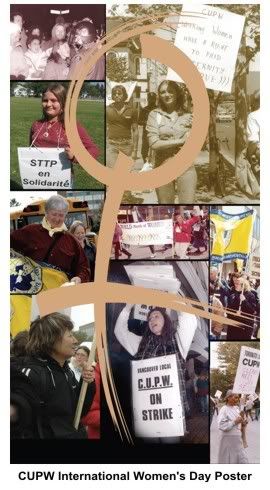Census 2006
 The latest census data released Tuesday by Statistics Canada suggests:
The latest census data released Tuesday by Statistics Canada suggests:
- On the divvying up of household tasks: women still continue to contribute more time to rearing kids, doing housework and caring for aging relatives than do men.
- Since 1996, the share of men participating in housework increased nationally by 3.5 percentage points to 87.9 per cent from 84.4 per cent. The corresponding rate among women held steady at nearly 93 per cent. Look for headlines like "Men Doing More Housework"
- When it came to long hours of unpaid housework, the gap widened. Almost one in five women spent 30 or more hours taking care of the home in '06, compared to just 7.7 per cent of men
- A decade ago, 16.9 per cent of women spent 30 hours or more bathing, feeding and otherwise engaging with their kids, compared to 6.2 per cent of men. By 2006, the proportion of women spending long hours care giving decreased to 13.2 per cent, while the proportion of men jumped to 10.4 per cent.
- The latest census figures show that the proportion of women in the labour force is indeed increasing over time. In 1996, 58.6 per cent of the labour force in Canada were women, compared to 60.5 per cent in 2001 and 61.6 per cent in 2006. The proportion of men has held relatively steady at about 72 per cent over the same period.
- And when it comes to elder care, the 2006 census shows an even greater disparity between the sexes: 3.9 per cent of women reported spending at least 10 hours a week on elder care, while only 2.2 per cent of men contributed that much time. That's up from 3.1 per cent of women and 1.7 per cent of men in 1996. (Overall, 20.9 per cent of women spent some time per week on elder care in 2006 compared to 15.7 per cent of men that year.)
- More women (33 per cent) than men (25 per cent) in the 25-34 age group have a university degree.
- The census found the most popular field of study for male and female post-secondary students was business, management and marketing with one out of every five students choosing to study these areas. Approximately 1,357,200 women graduated in this field compared to just over 801,600 men.
The census is conducted every five years by Statistics Canada and is based on information filled out by Canadians on May 16, 2006. The data released Tuesday on work and education follows information released earlier on overall population growth, families, age and sex breakdowns of the population, immigration and a look at the country's aboriginal communities.










No comments:
Post a Comment